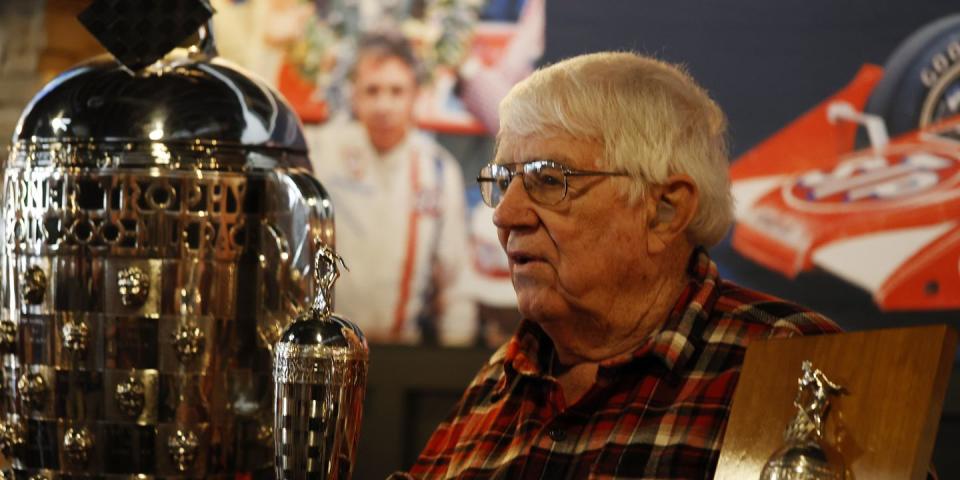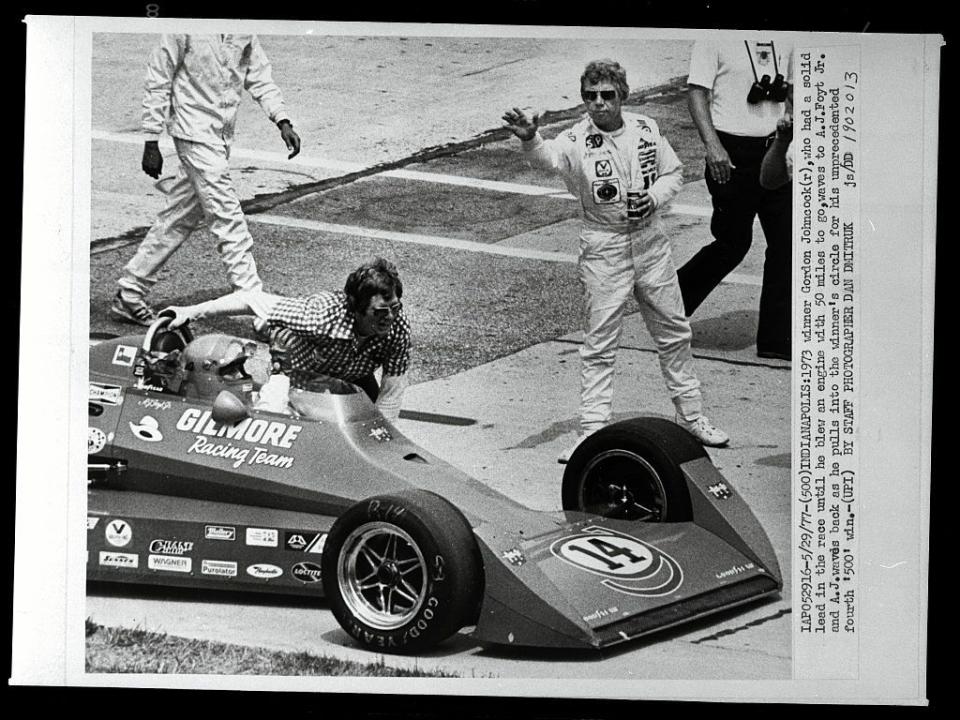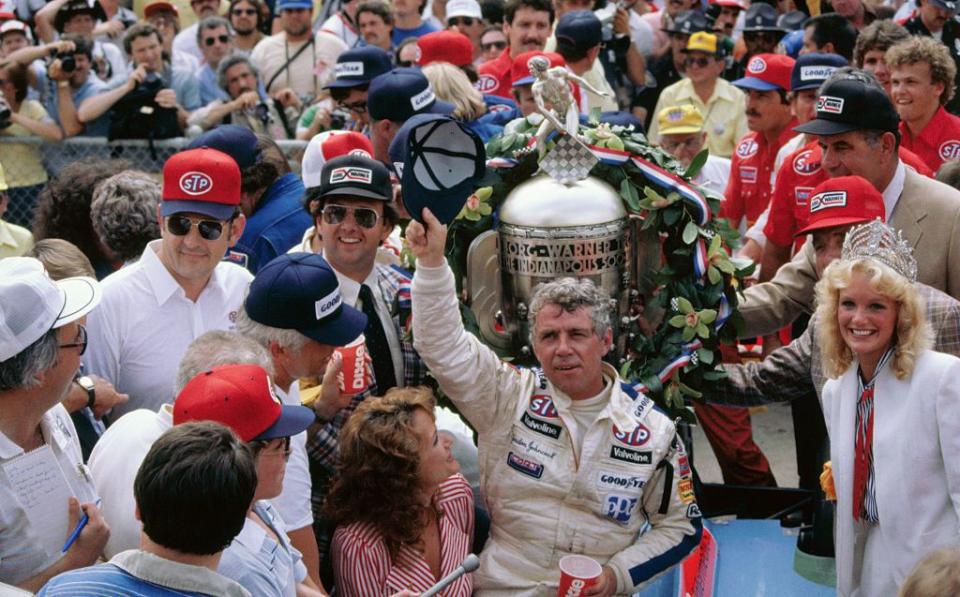1973 Indy 500 Winner Gordon Johncock 'Always Tried to Do the Right Thing'

Come this Sunday morning, Gordon Johncock will celebrate the 50th anniversary of his first of what would eventually be two wins in the Indianapolis 500.
In an exclusive interview with Autoweek, Johncock still vividly remembers the day he catapulted into Indy 500 greatness. The race was postponed three days due to weather before it finally took the green flag on Wednesday, May 30, 1973.
Driving the Pat Patrick-owned No. 20 STP Eagle Offenhauser, Johncock dominated the race, leading just under half (64) of the rain-shortened event’s 133 laps, taking the lead on Lap 73 and held on the rest of the way until the event was red-flagged.

“I didn't feel that race was given to us,” Johncock said when asked about the race ending 67 laps short of its scheduled finish. “If we had only led one or two laps and happened to be settin’ there when they stopped it and won it that way, then I guess you wouldn't have earned it very well.
“But I think we earned the race, it wasn't given to us. We were one of the fastest cars that day and ended up winning the race. I don't know what it would have been if we held together. We probably would have won it at 200 laps, I suppose, because we were fast enough and led enough laps and would have been alright, but we will never know that.”
However, the win still wound up being somewhat bittersweet for Johncock, who turns 87 on August 5.
Because of the rain, a muted and shortened post-race celebration was held in the garage area. But Johncock and his team weren’t in a celebratory mode, as they were also thinking of their teammate, Swede Savage, who was severely injured in a crash in the race.
In addition, sadly, a crew member on the Patrick team, Armando Teran, was struck and killed by a fire truck driving north on pit road that was responding to the scene of Savage’s horrific crash.
As a result, immediately after the post-race awards celebration, Johncock and his team went directly to the hospital to check on their fallen teammate, the post-race celebratory banquet to honor Johncock was canceled, the team had dinner at a local hamburger joint, and sadly, Savage passed away from his injuries 33 days later on July 3, 1973.
When asked if it feels like it has been 50 years since he won for the first time at Indy, the Michigan native chuckled and said, “Time goes so fast. It surely doesn't when you look back at it, and 50 years ago, no, it sure don’t seem like it’s been that long ago.”

Johncock finished third in the 1976 and 1978 editions of the Indy 500, and had dominated the 1977 race, comfortably in the lead with 16 laps to go, when a crankshaft broke on his car, paving the way for A.J. Foyt to earn his record-breaking fourth 500 victory.
(And wait until you hear what Johncock had to say about that race here in a few minutes.)
But after coming so close those three other times, Johncock came back in 1982 to win the 500 for a second time, outdueling Rick Mears and winning by 0.16 seconds, roughly one car length, at the time the closest finish in 500 history (it remains the fourth-closest behind the 1992, 2014 and 2006 finishes).
“The more pressure that was put on me when I was racing, I think the better I did,” Johncock said.
Ironically, had Mears won that race, he would now likely be the only five-time Indy 500 winner, instead of being one of four drivers (Foyt, Al Unser, Helio Castroneves and Mears) who have turned the rare feat.
While Johncock and Mears never have looked back on what might have been if Mears would have won the ‘82 race instead, the man called “Gordy” got a bit fired up when it came to talk about Foyt.
They had a difficult relationship and even to this day, Johncock bristles and still alleges Foyt cheated during his career.

“Well, we had a pretty good relationship when I first started, but I got to where I realized how bad he was able to cheat at racing and it really kind of got to me,” Johncock said. “There’d be times he’d qualify and come back to the garage area, and USAC inspectors wanted to go in the garage and he wouldn’t let them in, so I guess that had to tell you something. Then guys would clock him on the backstretch and see how much faster he was going than other cars.”
As for who was the toughest competitor he ever faced in Indy car racing, “I’d have to say Bobby Unser was the toughest competitor, head-to-head, for me,” Johncock said. “He was always right there, never gave up, he’d get out of the car all he could get. Bobby was exceptionally good. It’s hard to believe Bobby and Al are both gone. It doesn’t seem right.”
But Foyt is still around at 88 years old. Johncock once again reached back into his sense of humor when asked if he and Mears had ever talked about his 1982 win deprived Mears of eventually winning a fifth Indy 500.

 Yahoo Autos
Yahoo Autos 